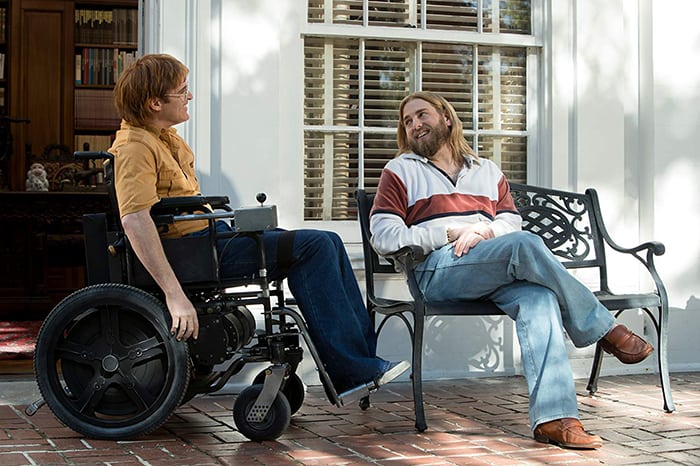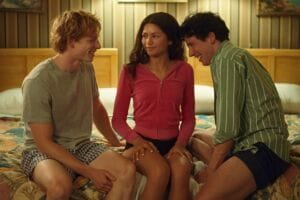If you’ve seen a Gus Van Sant film and have a working heart, you’ve probably gotten emotional during a Gus Van Sant film. The writer/director deals in spades of sentimentality, telling stories that restore hope in humanity without leaving the realm of reality. His most familiar film is “Good Will Hunting”, though many admire him for his work in pioneering queer cinema with “My Own Private Idaho” and “Milk.” His most recent movies aren’t as adored as his earlier work—perhaps because the world’s running out of tenderness; perhaps because he’s running out of inspiration. Either way, the protagonist of “Don’t Worry, He Won’t Get Far on Foot” isn’t running anywhere.
This is Van Sant’s first screenplay in over a decade. He tends to direct movies when he finds scripts that inspire him—after all, “Good Will Hunting” was Matt Damon and Ben Affleck’s writing debut—but the source of his latest movie is a book from back in 1989. The original “Don’t Worry, He Won’t Get Far on Foot” is the autobiography of John Callahan, an alcoholic quadriplegic who drew cartoons. Well, not all at once, much To Van Sant’s apparent dismay.

The screenplay he adapts from Callahan’s autobiography is vociferously non-chronological. In its opening minutes, “Don’t Worry, He Won’t Get Far on Foot” jumps between so many spots in Callahan’s life that it could be the jumbled montage of memories in his dying moments. Callahan’s comeback story is quite inspiring in chronological order: he suffered from alcoholism since his early teens, drunk driving led to a car accident that rendered him a quadriplegic at twenty-one, he later found purpose in AA and the art of cartoons. But Van Sant structures the story like a snake chasing its own tail—and occasionally lunging at other segments of its looping body. The entire first half of the film plays like the plot was put through a blender and poured on screen.
Around the halfway mark, though, a miracle happens: the film straightens out. Somewhat inexplicably, the latter half of “Don’t Worry, He Won’t Get Far on Foot” shifts to chronological storytelling, and the movie strengthens significantly. When it embraces the simplicity of the normal flow of time, the screenplay is Van Sant’s strongest since “My Own Private Idaho.” It elicits smiles and tears, especially when Callahan loosens alcohol’s vice grip and experiences those things for himself.
Even when the film isn’t finding its footing in the second half, it benefits from Van Sant’s direction and the moving nature of the real-life story. It’s awash in soft colors and naturalistic cinematography, ensuring that it’s easy on the eyes as well as soothing for the heart. The life of John Callahan was tragic, hopeful, and invariably interesting: his journey towards recovery would be heartwarming in any order. Van Sant misses some opportunities to explore gray areas—Jonah Hill’s AA sponsor is practically Jesus, and the film’s one implicit criticism of him is wiped away with too easy an explanation—but this tale of triumph need not drown in moral mire.
Of course, Joaquin Phoenix is nothing short of outstanding as Callahan. It’s obvious that he’s one of the greatest actors of all time—what should be noted is Phoenix’s craft as a purveyor of weakness. Time and time again, he finds the fullness of humanity in its shortcomings, and his ability to embody that paradox is what sets him apart. Even when “Don’t Worry, He Won’t Get Far on Foot” feels like a puzzle with shuffled pieces, Phoenix remains a terrific centerpiece.
★★★½ (3.5/5)




